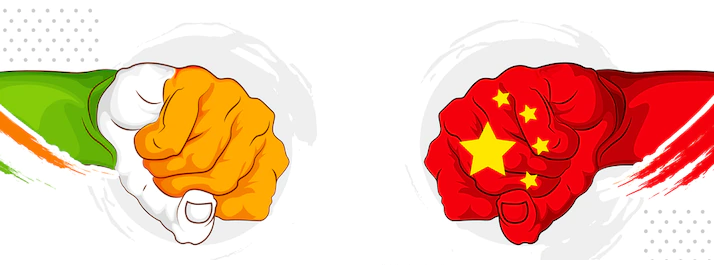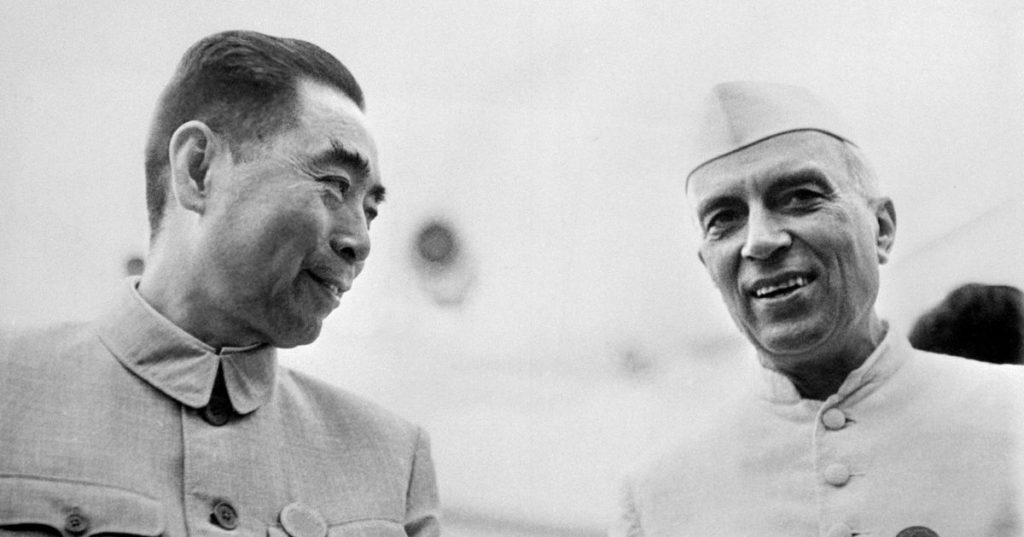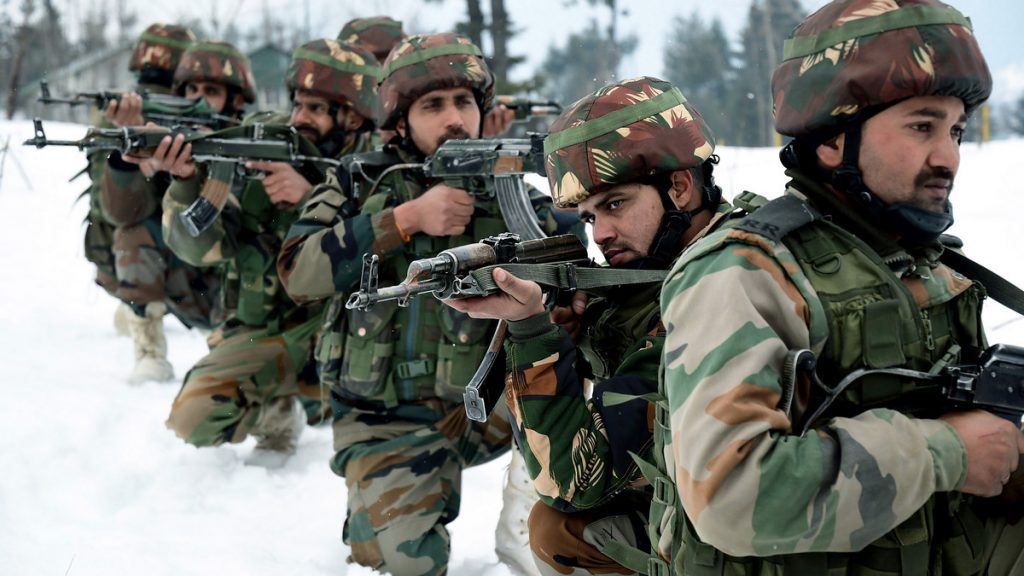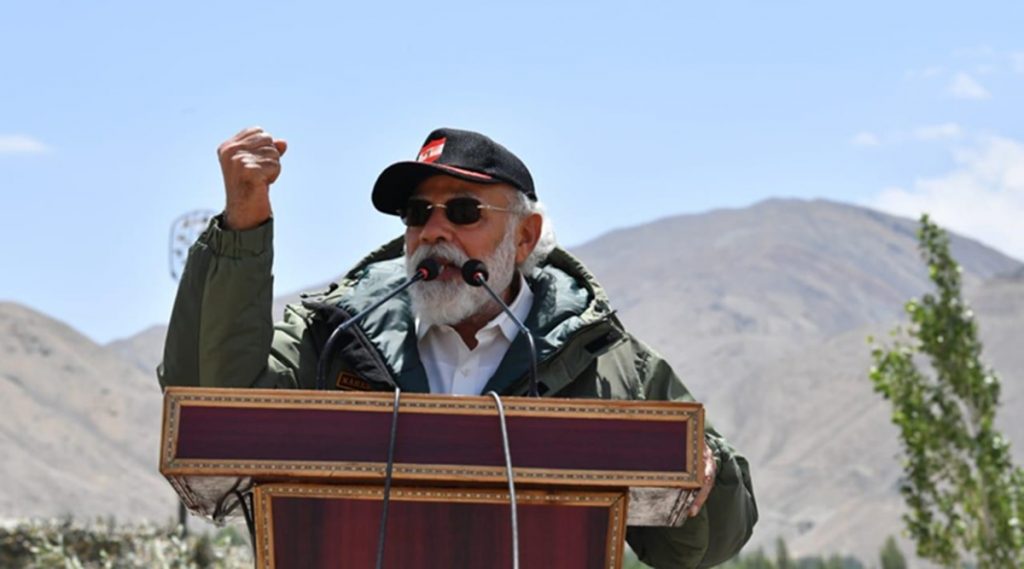
India and China are the two most populated and fastest-growing economies in the world. Both have been in a cordial relationship since the 2nd century BC. Their relations sustained for more than 2000 years now. The relations between India and China have never been too cold. Both of them share borders with Nepal and Bhutan, parts of Kashmir which are disputed; claimed either by Pakistan or the People’s Republic of China. Sino Indian relations, from ancient times both of these countries, never had common political backgrounds. However, their cultural beliefs were somewhere connected as Buddhism always had a major influence on China’s culture; the people of China embrace it as a religion. Our ancient literature has a mention of China; in Mahabharata.
India has always seen a supporter of China because of its socialist ideologies. China and India both states have been cordial and respectful however China’s recent aversion in so many ways have tricked a lot of countries including the States. India was never active in declaring wars with any of its neighbouring countries. In China’s case also Pandit Jawaharlal Nehru; first prime minister of India made Chinese apprehensions less intensive.
Historical Background
Phase 1 – The Ancient Times
As we already said that India’s first-ever encounter with China happened in the 2nd century BCE. But even before this in the very 1st century BCE Buddhism – the peace religion moved from India to China. Slowly the trade relations grew i.e. the Silk Road; it was the major trade route between India and China. Our early Indian literatures have mentioned China i.e. in Chanakya’s Arthshastra; he called Chinese silk as Cinamsuka and Cinaputta as well as somewhere in Mahabharata there was a state name Qin which later on became the Qin Dynasty.

When the Han Dynasty annexed Yunnan, the Chinese authorities discovered an Indian community was living there named Shendu. Shendu community was in Indus Valley which is now the Sindh Province in modern Pakistan. Vijay Gokhale, who was the then Indian Ambassador to China observed that even before Buddhism moved to China, there was some sort of linguistic exchange between the two countries.
Phase 2 – Middle Ages
In the middle age, many Indian dynasties had strong ties with China. The Tang, Harsha, Yuan, Ming dynasties of China had occupied a large control over the Silk Road. A Diplomatic Mission was sent towards India under which emperor Harsha was killed. Somewhere in the 8th-century Aryabhatta translated tables of Sine’s in Chinese. An astronomer who was born in China but originally from India translated Navagraha calendars. The Ming dynasty’s rulers visited our naval ports. The well-known Chola Dynasty had trade with China. They conquered the empire of Indonesia and Malaysia and secured a sea trading route to China. Then in the 18th and late 19th centuries, the Sikh empire expanded. The famous Sino-Sikh War happened. The Sikh army was defeated by China and they entered Ladakh where the Sikh army defeated them. Meanwhile, in the midst of all of these the first Anglo-Sikh War occurred because of Britishers. China was in between its first Opium War. The Britishers used to trade opium grown in India to China. They engaged the British Indian Army against China.
Phase 3 – After Independence
After India got its independence, it was the first non-communist nation to establish diplomatic relations with the People’s Republic of China. The then Prime Minister Jawaharlal Nehru wanted both the nations to take a friendly turn. The regular visits of administrators from both countries helped strengthen friendship. The Tibet issue consisted of a 16-year-old mission helping maintain direct relations between India and Tibet. In 1954, they signed India and China agreement on trade and intercourse; it was an eight-year agreement based on five principles of Panch Shila. The slogan हिंदी चीनी भाई भाई arose from here. Immediately new maps were formed including the Aksai Chin region. Then in 1959, China said that it never agreed to the McMohan line which defines the eastern border between India and China.

In the same year, thousands of Tibet’s refugees came and settled in Himachal Pradesh with Dalai Lama. China claimed a huge part of our land saying rectification of the border. India didn’t want to exchange northeast to Aksai Chin. The relations went on deteriorating as it acquired some strategic points in Ladakh until PRC declared an actual cease-fire and took twenty-one kilometres from its Line of Control. In late 1967 in Sikkim, they fought the battle of Nathu-la and Chola then again Sumdorong Chu Valley in Arunachal Pradesh in 1984.
When Rajiv Gandhi became the Prime Minister, he visited China in 1998 which led to the emergence of a new era. It intended warm friendly relationships, solving border disputes, increasing bi-lateral trades. Some meetings were held to resolve the issue of Line of Actual Control and operation of armed forces. The nuclear test which took place in 1998 worsened the situation when India’s Defense Minister said China as India’s biggest threat. China declaring Sikkim as an integral part of Indian State in itself was a positive step towards solving the border disputes.
Line of ‘Actual’ Control
The Line of Actual Control is another ceasefire line which separates Ladakh from the Chinese occupied area; Aksai Chin, in the Sino-Indian border issues. It was formed after the 1962 Sino-Indian war. This line separates the eastern Union Territory of India: Ladakh and Chinese Tibet area and covers a small patch between McMohan Line to India and McMohan Line in China which is an undisputed area in between the two nations. This entire Line of Actual Control covers four states: Uttarakhand, Himachal Pradesh, Sikkim and Arunachal Pradesh along with Union Territory Ladakh. China’s Premier sent a letter to Jawaharlal Nehru in which he used this term.

After the Sino- Indian war of 1962 Line of Actual Control was officially accepted as a bilateral agreement. China’s Premier Zhou, in his letter to Prime Minister Nehru, talked about LAC and the area it covers. During the war, the Prime Minister refused to accept this line as he said it was only the result of aggression that they created a forty sixty kilometres line and now offering to withdraw twenty kilometres and trying to mock with us. Zhou replied that this already existed from eastern sides; it combines with the McMohan line and from the west with the traditional customary line. It was recognized in 1993 and 1996 agreements that said, no activities shall overstep the LAC on either side. Our government many times saw unwanted and illegal intrusions by the Chinese army. Indian troops saw some unwanted objects near the Galwan lake at the border region. To stop this in October 2013, India and China signed an agreement to inspect over the LAC and ensure that no armed conflicts take place.
Agreements Signed
As there is no clarification between the two nations and in order to resolve their border issues, India and China have signed four agreements till date. However, these are considered as faulty and are in no way resolving the border disputes. These agreements are as follows:
- First Agreement- It was signed in September 1993 which was signed so that no activities shall overlap between India and China beyond LAC.
- Second Agreement- It was signed in November 1996; the reason behind signing this was to limit their military groups within their own geographical areas.
- Third Agreement- It was signed in April 2005 for setting up Political and Guiding Parameters.
- Furth Agreement- It was signed in October 2013 for Border Defense Cooperation.
There were common faults in these agreements that they were seen far away from ground reality. There is no line which separates both country’s armies and no actual mention of its location. The fourth agreement is in the process of setting up a boundary on maps. However, both countries have exchanged the maps containing LAC from Uttarakhand and Himachal Pradesh but there is no exchange on the western sides.
Recent clashes between the two Nations
When we talk about the recent clashes between India and China, it is the incident that took place in the months of May and June 2020. There was never this serious and violent clash between the two since 1967. There were certain clashes seen between the two countries’ armies near the disputed Line of Actual Control. In June 2020, Chinese troops illegally installed their machinery and tents in the Galwan valley which the Indian troops objected to. As a result, a violent clash broke out between the troops of both the nations leading to 20 Indian Soldiers being martyred and more than 40 Chinese military men losing their life in action (100 Chinese Armymen according to a former Chinese Military Official).

It was also said that China confined some soldiers and released them later and so did India. Reportedly, the tensions were on the rise since April when thousands of Chinese troops came to the disputed Line of Actual Control on the Indian Territory. Indian troops asked them to back-off from the area, their refusal to do so led to violent fights between them. Although, both the nations blamed each other for interference. India claims that it was China’s pre-planned action and it is the taste of their own medicine. Where on the other hand China claims that Indian troops came over their area and held Indian forces responsible.
The actual problem is that the Line of Actual Control is very improperly demarcated. Therefore, the need of the hour is to fix the borders line appropriately to avoid such tensions in the future. As of now, both countries’ officials had a long conversation in which they said there shouldn’t be a war-like situation. Both countries are okay with diplomatic relations. This will affect the whole world as both these countries are most populated and ahead in terms of nuclear powers. These conflicts can also create a disbalance in the geopolitical structure of the world. The armies which are a mark of its nation’s pride, the government which strongly abide by the nationalist rules will affect other countries too.
Role of the States in the Indo-Sino Arrangement
China has a cordial relationship with Pakistan which is, was and will be the biggest threat to India. The United States has always built complicated relationships with both India and China. India’s nuclear deal with the US in 2008 has strengthened the Indo-US relations. The input of the US has affected the path between India and China. China’s analysts think that Indo-US strategies will not favour China. On the other hand, India also doubts its relationship with China. The then US President Barack Obama visited China in 2009 which made India scared of its ties with the US. India has shown its fear by thinking that the US is seeing positive importance in China. Therefore, to have a stable relationship both India and China have to moderate the effect of US diplomacy on them.
Conclusion

To strengthen the India-China relationship, both nations have to make efforts to produce tangible results. The most important step that needs to be taken is the settlement of its border disputes as it is becoming an obstacle in their bilateral relations. China is afraid of India as it is emerging as a global superpower and a major player in South Asia. Both these nations have to set up some agendas relating to its bordered neighbourhood. Both nations need to address emerging trade problems and take the necessary steps to resolve them.
Both these nations have pride and history of their own. Both are rich in their cultural heritage and have always applied different strategies and mechanisms to tackle their problems. It is not the similarities but the differences which make the nations who they are. The improved relationship between both countries is not only important for them but for creating stability in whole South Asia.